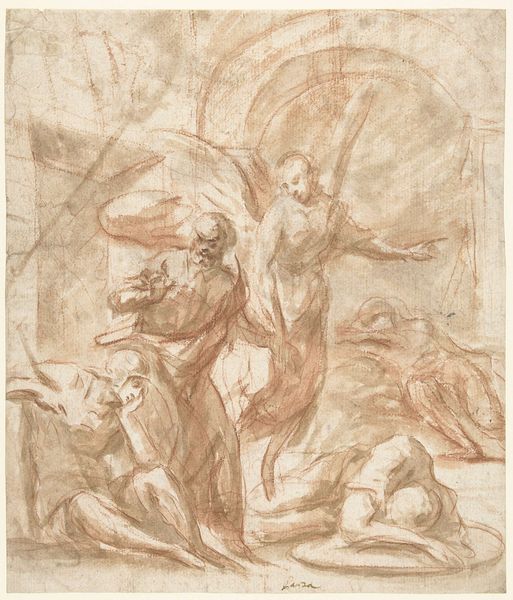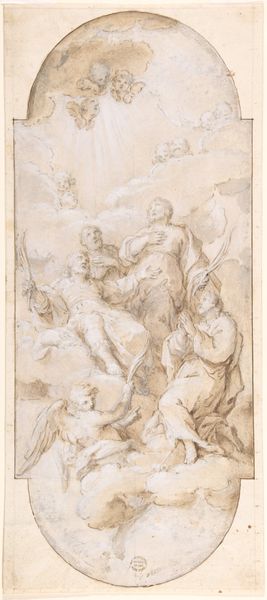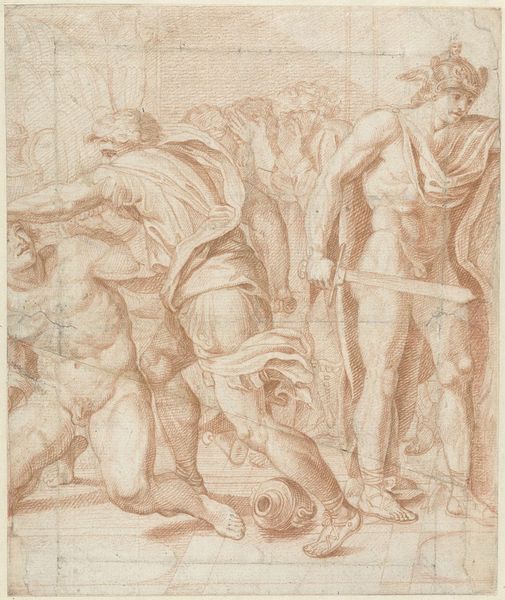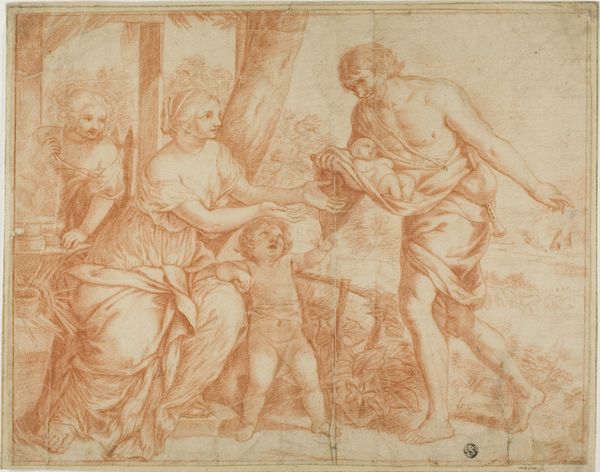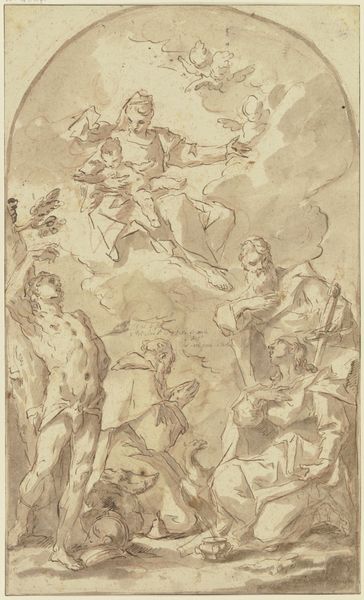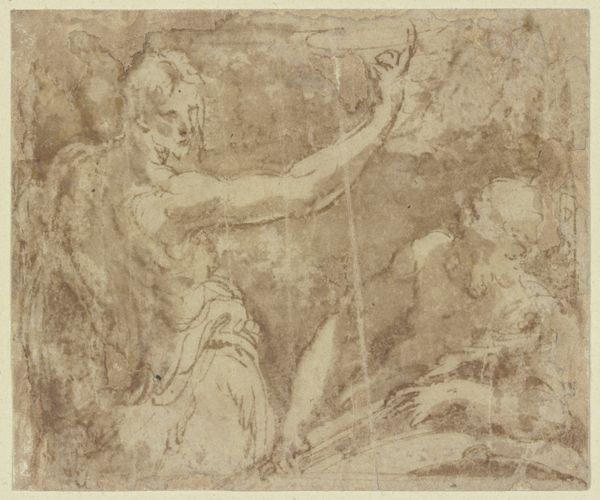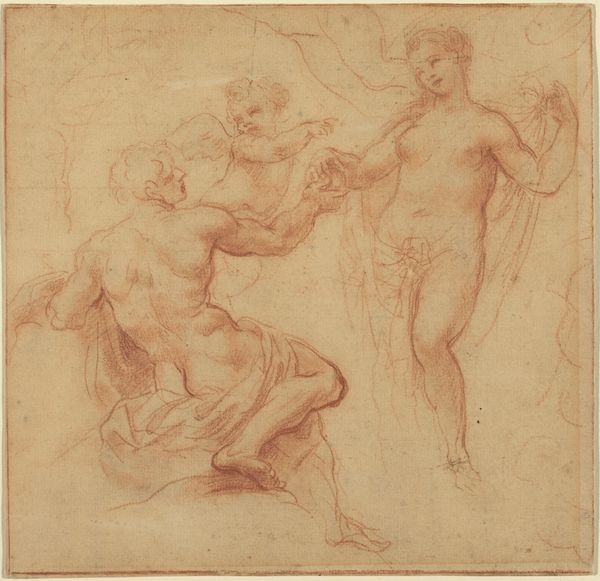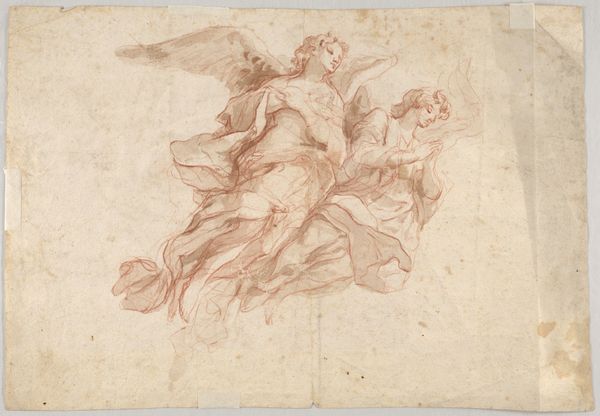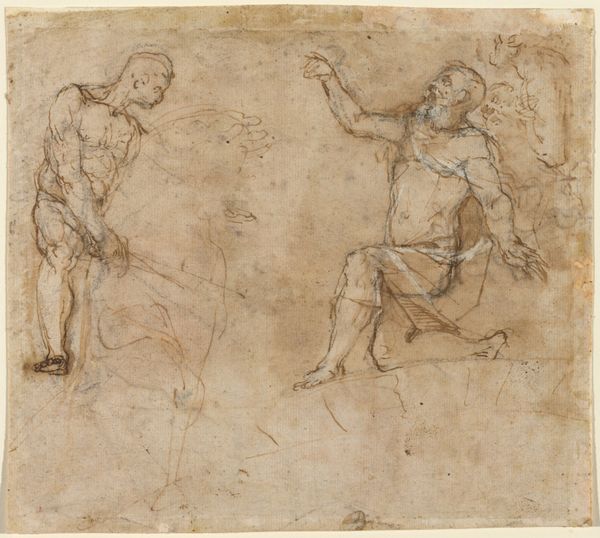
drawing, dry-media
#
drawing
#
baroque
#
figuration
#
11_renaissance
#
dry-media
#
history-painting
#
watercolor
Dimensions: height 255 mm, width 218 mm
Copyright: Rijks Museum: Open Domain
Curator: We're looking at "Angelica en Medoro kerven hun namen in een boom," a drawing believed to have been created between 1653 and 1703 by Federico Panza. It depicts a scene from Ariosto's "Orlando Furioso," capturing a tender moment of lovers marking their bond in nature. Editor: It feels incredibly immediate, almost like a fleeting thought captured on paper. The raw energy of the sketch gives it a kind of vulnerability, exposing not just the artist's hand but perhaps their inner world too. Curator: Indeed. As a preparatory sketch, it offers us a glimpse into Panza's creative process, revealing his approach to translating literary narrative into visual form within a Baroque sensibility. The scene itself – lovers, trees, and the act of inscription – resonates deeply with prevailing pastoral and romance tropes in art and literature. Editor: Right, and situating this piece within the Baroque era, we can see how it departs from the Renaissance idealization of love, venturing into a more sentimental, almost performative expression. Carving their names becomes a performative declaration, not only to each other but also to the world. What power dynamics are at play here? Whose name is carved first? Whose hand guides the carving? It opens up intriguing lines of inquiry, wouldn't you agree? Curator: Absolutely. There’s also the intriguing fact of the source material itself: Ariosto’s poem was wildly popular, thus linking Panza’s imagery to the social phenomenon surrounding that work. That element is deeply rooted in both public and artistic perception. And beyond gender, consider the symbolism of the tree itself—growth, nature, permanence… How do these aspects tie into the relationship depicted here? Editor: Precisely! Exploring all these facets helps reveal the richness embedded within this unassuming sketch. I think about what that means—our stories, our experiences etched into something larger than ourselves. That performative act and all that follows! Curator: It’s these intersecting threads of literature, social practices, artistic tradition and visuality that make it interesting for all of us, isn’t it? It makes art less of an elite conversation and something rooted in the very way we behave. Editor: Indeed. Looking closely at works like this one, makes me feel empowered and makes me think that history, love, relationships can live forever.
Comments
No comments
Be the first to comment and join the conversation on the ultimate creative platform.
